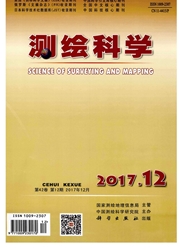

 中文摘要:
中文摘要:
针对经济发展类型面临转型的山区土地利用动态变化和预测问题,该文以清江中下游为例,提出了采用CA-Markov模型的研究方法。结合2000、2008和2015年的Landsat遥感影像,考虑地形、交通、行政中心和当前土地利用约束等影响因子,模拟出2015年预测情况与解译结果相比,Kappa系数达0.810 9,表明模型可信度较高。在此基础上预测2022年的土地利用情况,结果表明,2022年延续了当前发展模式,即由农业经济主导转变为旅游生态经济主导,耕地的重要性降低,城镇化率增加,但耕地的面积仍占据着总面积的23.23%,建设用地面积仅占总面积的2.62%,说明该区域的城镇化水平依然较低。该结果揭示了清江流域土地利用动态变化趋势。
 英文摘要:
英文摘要:
Aiming at the problems of dynamic change and prediction of land use in mountain area which economic development pattern facing transformation, this paper took the middle and lower reaches of the Qingjiang River as an example and proposed to use CA-Markov model. Using Landsat remote sensing ima- ges in 2000, 2008 and 2015, the land use change tendency in 2015 was simulated under the consideration of factors like terrain, traffic, administrative centers and the current land use constraint. Compared with the interpretation data of 2015, the Kappa coefficient of simulated result is 0. 810 9, indicating that the model is credible. Finally, the land use change in 2022 was predicted to be the same as the current situation, in which the leading economy of agriculture is changing into the leading one of eco-tourism, presenting that the importance of farmland is reducing and urbanization rate is increasing however, the areas of farmland occupy 23.23% of the whole area while the construction lands only occupy 2.62%, which means that the urbanization level of this region is still low. In a word, this study could reveal the trend of dynamic land use change in Qingjiang basin.
 同期刊论文项目
同期刊论文项目
 同项目期刊论文
同项目期刊论文
 期刊信息
期刊信息
